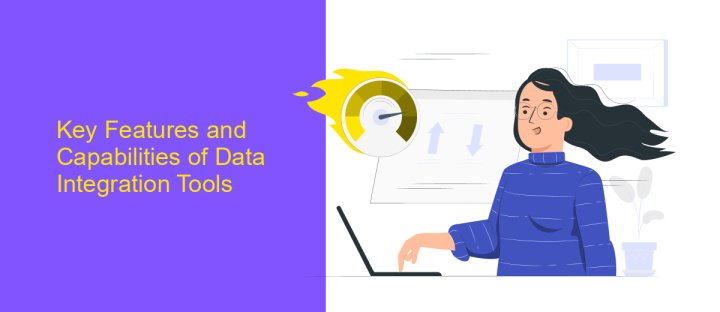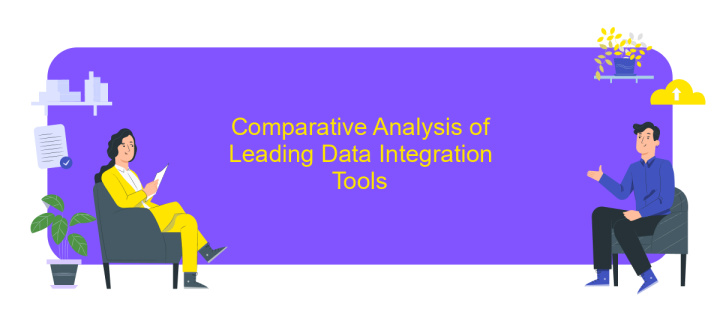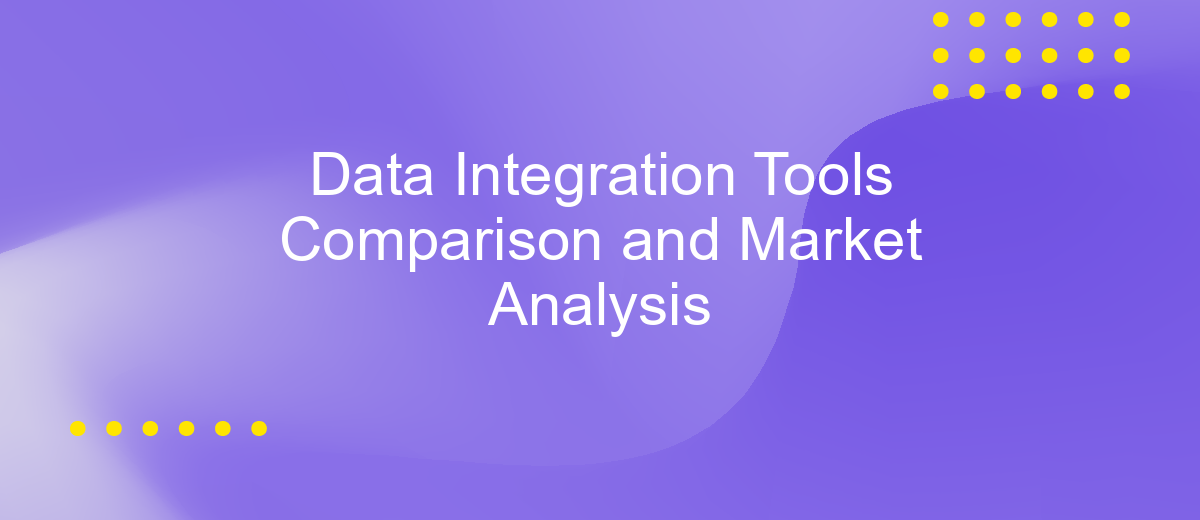Data Integration Tools Comparison and Market Analysis
In today's data-driven world, businesses are increasingly reliant on robust data integration tools to streamline operations and drive informed decision-making. This article provides a comprehensive comparison of leading data integration solutions, examining their features, strengths, and weaknesses. Additionally, we delve into a detailed market analysis to identify emerging trends and future opportunities, offering valuable insights for organizations seeking to enhance their data management strategies.
Introduction: The Evolving Landscape of Data Integration
In today's fast-paced digital world, data integration has become a cornerstone for businesses aiming to harness the power of data. As organizations generate vast amounts of data from diverse sources, the need for effective data integration tools has never been greater. These tools enable seamless data flow, ensuring that critical information is accessible and actionable across various platforms and departments. Over the years, the landscape of data integration has evolved significantly, driven by technological advancements and the growing complexity of data ecosystems.
- Emergence of cloud-based integration solutions
- Increased focus on real-time data processing
- Adoption of AI and machine learning for enhanced data insights
- Growing importance of data governance and compliance
- Shift towards self-service integration platforms
These trends indicate a shift towards more agile, scalable, and intelligent data integration solutions. As businesses continue to prioritize data-driven strategies, the demand for robust integration tools will only increase. Understanding the evolving landscape of data integration is crucial for organizations looking to stay competitive and leverage their data assets effectively.
Key Features and Capabilities of Data Integration Tools

Data integration tools are essential for seamlessly combining data from various sources, ensuring consistency and accessibility across platforms. A key feature of these tools is their ability to support multiple data formats and protocols, enabling organizations to connect disparate systems effortlessly. They offer robust data transformation capabilities, allowing users to clean, enrich, and standardize data to meet specific business needs. Additionally, these tools often include intuitive drag-and-drop interfaces, making it easier for users to design and manage complex data workflows without requiring extensive coding knowledge.
Another critical capability is the automation of data integration processes, which reduces manual intervention and minimizes errors. Tools like ApiX-Drive excel in this area by providing pre-built connectors and templates, simplifying the setup and management of integrations. They also offer real-time data synchronization, ensuring that information is always up-to-date across all connected systems. Furthermore, data integration tools prioritize security and compliance, offering encryption and access controls to protect sensitive information. These features collectively empower organizations to harness the full potential of their data, driving informed decision-making and operational efficiency.
Comparative Analysis of Leading Data Integration Tools

In the rapidly evolving landscape of data integration, selecting the right tool is crucial for organizations aiming to streamline their data processes. Leading data integration tools offer varied features, and a comparative analysis can help in identifying the most suitable option for specific business needs.
- Informatica PowerCenter: Known for its robust ETL capabilities, it provides comprehensive data integration solutions with high scalability and performance.
- Talend: Offers open-source flexibility and is praised for its user-friendly interface, making it a popular choice for businesses of all sizes.
- Microsoft SQL Server Integration Services (SSIS): Integrates seamlessly with other Microsoft products and is ideal for enterprises already invested in the Microsoft ecosystem.
- IBM InfoSphere DataStage: Excels in handling large volumes of data and complex integration scenarios, making it suitable for large enterprises.
- Apache Nifi: Focuses on data flow automation and real-time data processing, offering a highly customizable solution for tech-savvy users.
Each tool has its strengths and weaknesses, and the choice largely depends on the specific requirements, existing infrastructure, and budget constraints of an organization. Evaluating these tools based on integration capabilities, ease of use, scalability, and cost can guide businesses in making informed decisions.
Market Analysis: Trends, Growth Drivers, and Challenges

The data integration tools market is experiencing significant growth, driven by the increasing need for seamless data management across various industries. As organizations aim to leverage data for strategic decision-making, the demand for robust integration solutions is escalating. The rise of big data, cloud computing, and IoT further fuels this market expansion, as businesses seek to harness diverse data sources efficiently.
Technological advancements and the adoption of artificial intelligence and machine learning in data integration processes are transforming the landscape. These innovations enable real-time data processing and predictive analytics, enhancing the value proposition of integration tools. However, the market also faces challenges, including data security concerns and the complexity of integrating legacy systems with modern platforms.
- Growing demand for cloud-based integration solutions
- Increased focus on data governance and compliance
- Emergence of hybrid integration platforms
Despite these challenges, the market is poised for robust growth, with organizations prioritizing data-driven strategies. Vendors are focusing on developing scalable and secure solutions to address the evolving needs of enterprises. As data continues to be a critical asset, the role of integration tools becomes increasingly vital in fostering business agility and innovation.
Conclusion: Choosing the Right Data Integration Tool for Your Needs
In today's rapidly evolving digital landscape, selecting the right data integration tool is crucial for ensuring seamless operations and informed decision-making. With a plethora of options available, it is essential to assess your organization's specific needs, such as scalability, ease of use, and budget. Consider tools that offer robust functionality while being user-friendly, allowing for efficient data handling without extensive technical expertise. ApiX-Drive, for instance, provides an intuitive platform that simplifies the integration process, enabling businesses to connect various applications effortlessly.
Furthermore, evaluate the tool's compatibility with your existing systems and its ability to adapt to future technological advancements. A flexible and scalable solution will support your organization's growth and evolving data needs. Additionally, prioritize tools that offer reliable customer support and regular updates to ensure long-term efficiency and security. By thoroughly analyzing your requirements and exploring tools like ApiX-Drive, you can make an informed decision that aligns with your strategic objectives, ultimately enhancing your organization's data management capabilities.
FAQ
What are the key factors to consider when comparing data integration tools?
How does data integration impact business efficiency?
What are the common challenges faced in data integration?
How can businesses ensure successful data integration implementation?
What role do automation tools play in data integration?
Time is the most valuable resource in today's business realities. By eliminating the routine from work processes, you will get more opportunities to implement the most daring plans and ideas. Choose – you can continue to waste time, money and nerves on inefficient solutions, or you can use ApiX-Drive, automating work processes and achieving results with minimal investment of money, effort and human resources.

